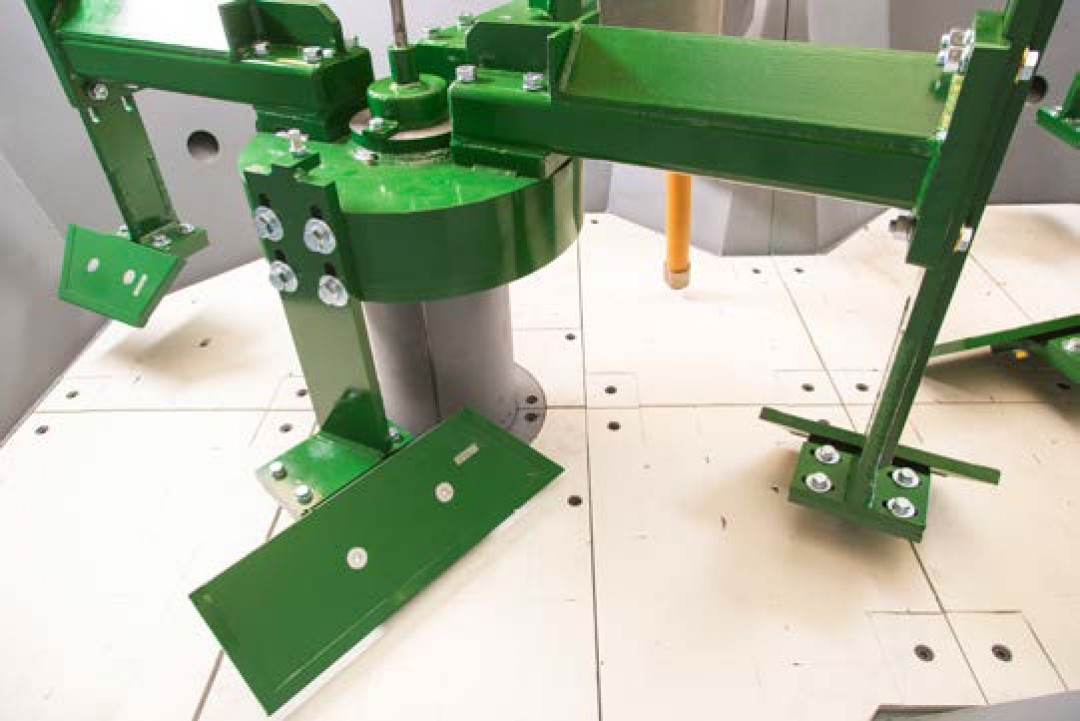
Hot sand is a significant challenge in green sand molding, impacting casting quality and production. It is important for foundries to understand what constitutes hot sand, its effects on molding and quality, and the techniques used to control and eliminate it. By exploring the causes and consequences of hot sand, as well as effective cooling methods, foundries can improve their sand preparation processes, reduce casting defects, and enhance overall productivity.
by Tom Arenholz, Senior Applications Engineer, Global OEM SIMPSON: Leading Foundry & Process Industries Technology Innovator
Hot molding sand refers to high-temperature sand that poses difficulties in sand preparation, molding, and casting quality. It requires additional raw materials to achieve usable molding properties. Studies have shown that sand temperatures above 120°F (49°C) result in a loss of physical sand properties, leading to inconsistent mulling and control problems. Hot sand can cause various defects, including sand inclusions, rough surface finish, metal penetration, swells, erosion, gas-related pinholes, and broken molds.
Effects of Hot Sand
Hot sand affects every aspect of a green sand molding operation, leading to higher scrap rates, increased bentonite consumption, and a loss of system control. Sand-related defects, such as sand inclusions and surface roughness, are strongly correlated with excessive sand temperature. Hot sand also disrupts sand system operation, making accurate moisture additions and compactibility control challenging. Moisture condensation from hot sand onto cold surfaces can cause sand to stick to patterns, decreasing sand capacity due to build up on the silo walls, and casting defects. Inconsistent sand properties and uncontrollable sand drying further complicate the molding process.
Controlling Hot Sand
There are three ways to control hot sand. The first is to increase the overall sand system capacity. This will only slightly lower the sand temperature as there is more time for the sand to cool before being put back into a mold. The second is to lower the metal to sand ratio. The metal: sand is determined by the product mix. Since foundries will want to maximize the output per mold, this is not an optimal method to lower sand temperature. To effectively control hot sand, foundries must implement mechanical cooling options. A well-designed sand cooling system plays a crucial role in maintaining sand consistency. The system should blend erratic temperature swings and other inconsistencies into a homogeneous sand mass. Adding water onto hot molding sand alone is insufficient for efficient cooling. Water must make contact with all sand grains for a critical amount of time, and the steam generated from water conversion must be removed.
Retention time within the cooling vessel is essential for effective sand cooling. Unsaturated air capable of absorbing moisture is required for evaporation-based cooling systems. Passing unsaturated air through the sand mass is more effective than passing it over the top. Controlling the quantity of water added and achieving discharge moisture close to the molding percentage is crucial. Sand cooling systems can also incorporate bentonite addition to enhance system efficiency as well as a process that includes back blending.
Benefits of Sand Cooling
Implementing a sand cooling system provides numerous advantages. It reduces sand-related scrap, enhances sand consistency, and boosts productivity. By maintaining sand temperature and moisture within the optimal range, casting defects like sand inclusions, swells, and erosion are significantly minimized. Sand cooling systems also improve muller efficiency, lower bentonite consumption, and enhance overall molding line performance. Cooling and blending return sand before it reaches the muller ensures more consistent molding sand, resulting in higher-quality castings.
Conclusion
Controlling hot sand is crucial for achieving consistency and defect-free components in green sand molding. By understanding the causes and consequences of hot sand and implementing effective cooling techniques, foundries can significantly improve their sand preparation processes. Sand cooling systems play a vital role in maintaining sand consistency, reducing scrap rates, and improving molding line efficiency. With proper control and elimination of hot sand, foundries can achieve higher-quality castings and optimize their operations.


